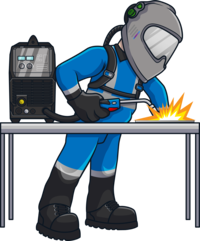As Christmas and New Year approach, it’s the perfect time to plan ahead and make sure your workshop has everything it needs to keep running smoothly over the holidays. At Proline Industrial, we understand how important it is to have the right gear ready when you need it most.
To help you prepare, we’ve outlined our 2025 Christmas operating hours, delivery cutoffs, and a few reminders to make your end-of-year planning simple and stress-free.
Christmas and New Year Operating Hours
Our Nelson and Auckland branches will be operating on a limited schedule over the holiday break. Please take note of the following hours to avoid any delays:
Tuesday 24th December: OPEN 7:30am – 12pm
Wednesday 25th December to Sunday, 4th January: CLOSED
Monday 5th January: OPEN as normal
Saturdays and Sundays: CLOSED
Order & Delivery Cutoffs
To ensure your supplies arrive on time and your workshop runs smoothly through the holidays, please take note of these important dates:
Cut-off to guarantee delivery before Christmas:
Tuesday, 16th DecemberCut-off for dispatche before Christmas shutdown:
Orders must be received by end of day Monday 23rd December
Placing your orders early ensures you’ll have all the consumables, spare parts, and equipment you need before our warehouse closes.
Order Early to Avoid Delays
Remember — Proline Industrial offers free shipping on all online orders over $50, making it a great opportunity to stock up before the holiday rush.
While you're on our website, don’t forget to explore the wide range of products we offer, including welding equipment, generators, air equipment along with all of their accessories and consumables. Enjoy free shipping on any online order over $50, and use our handy Parts Finder tool to track down the exact consumables you need for your welding gear. Proline Industrial is here to keep your workshop running smoothly with top-notch products and exceptional service.
Visit our website or get in touch to place your orders early. From all of us at Proline Industrial, we wish you a safe and happy holiday season!
If you have any questions or need assistance with your order, don’t hesitate to reach out:
- Phone: 0800 699 353
- Email: sales@prolineindustrial.co.nz
- Website: www.prolineindustrial.co.nz













































